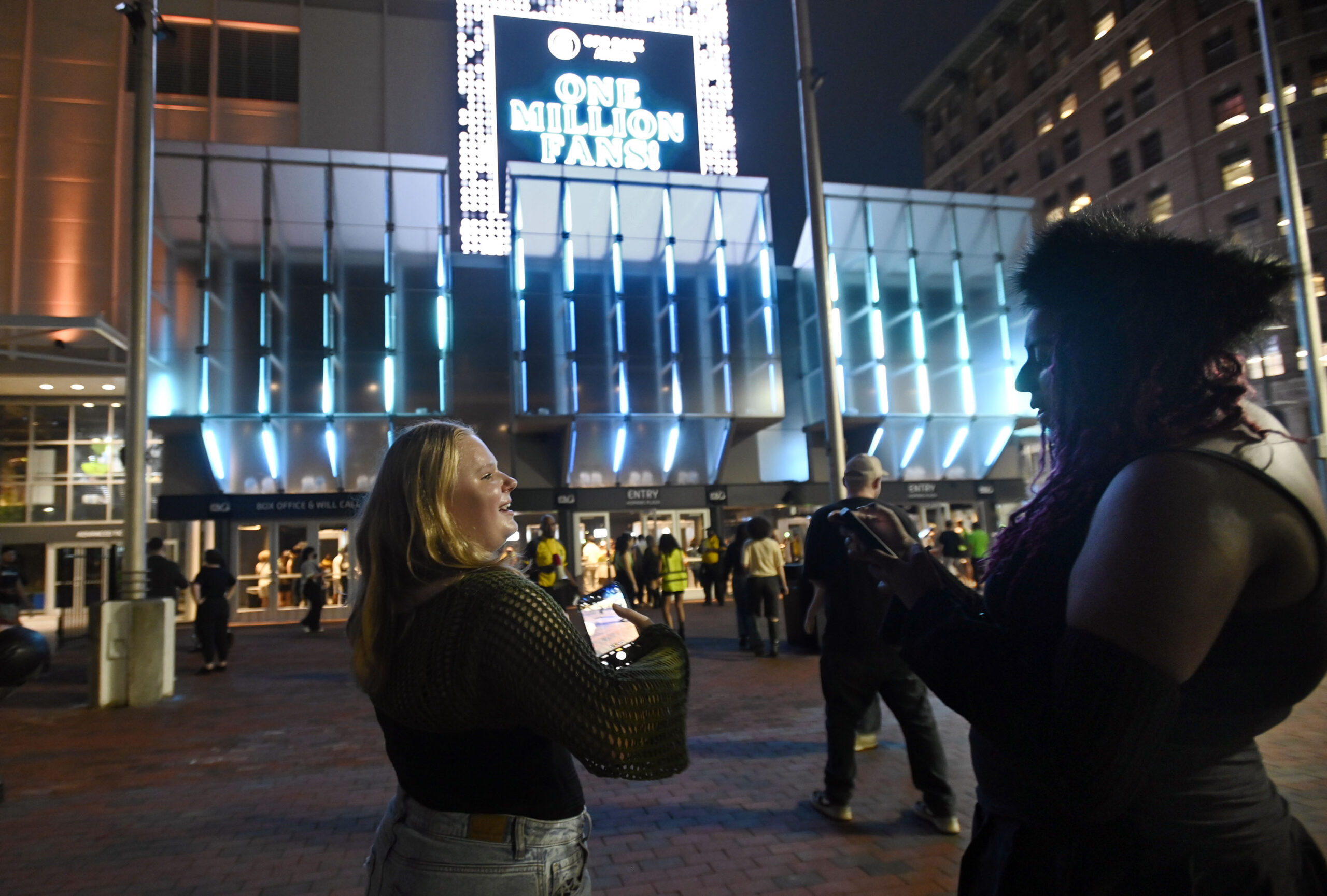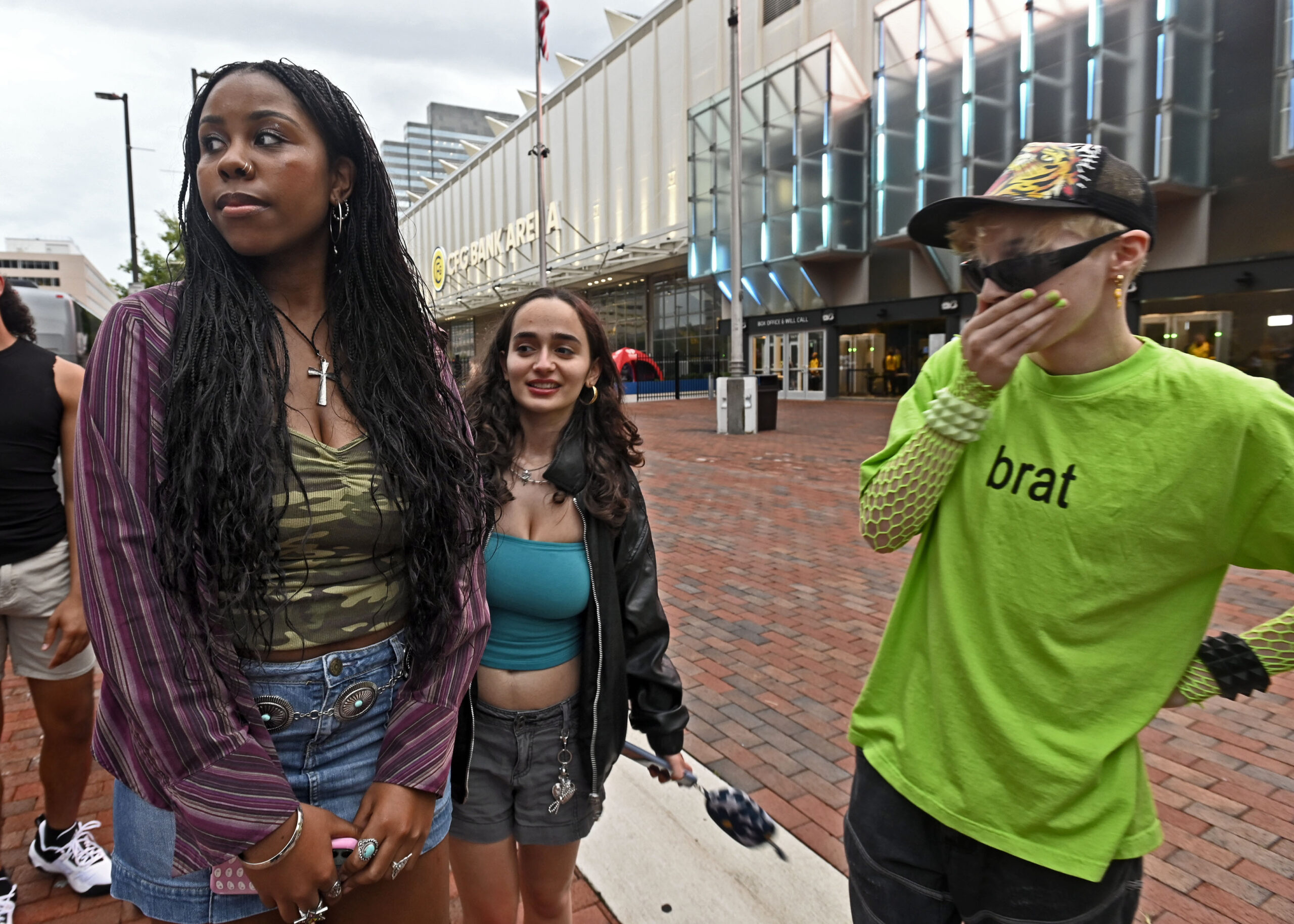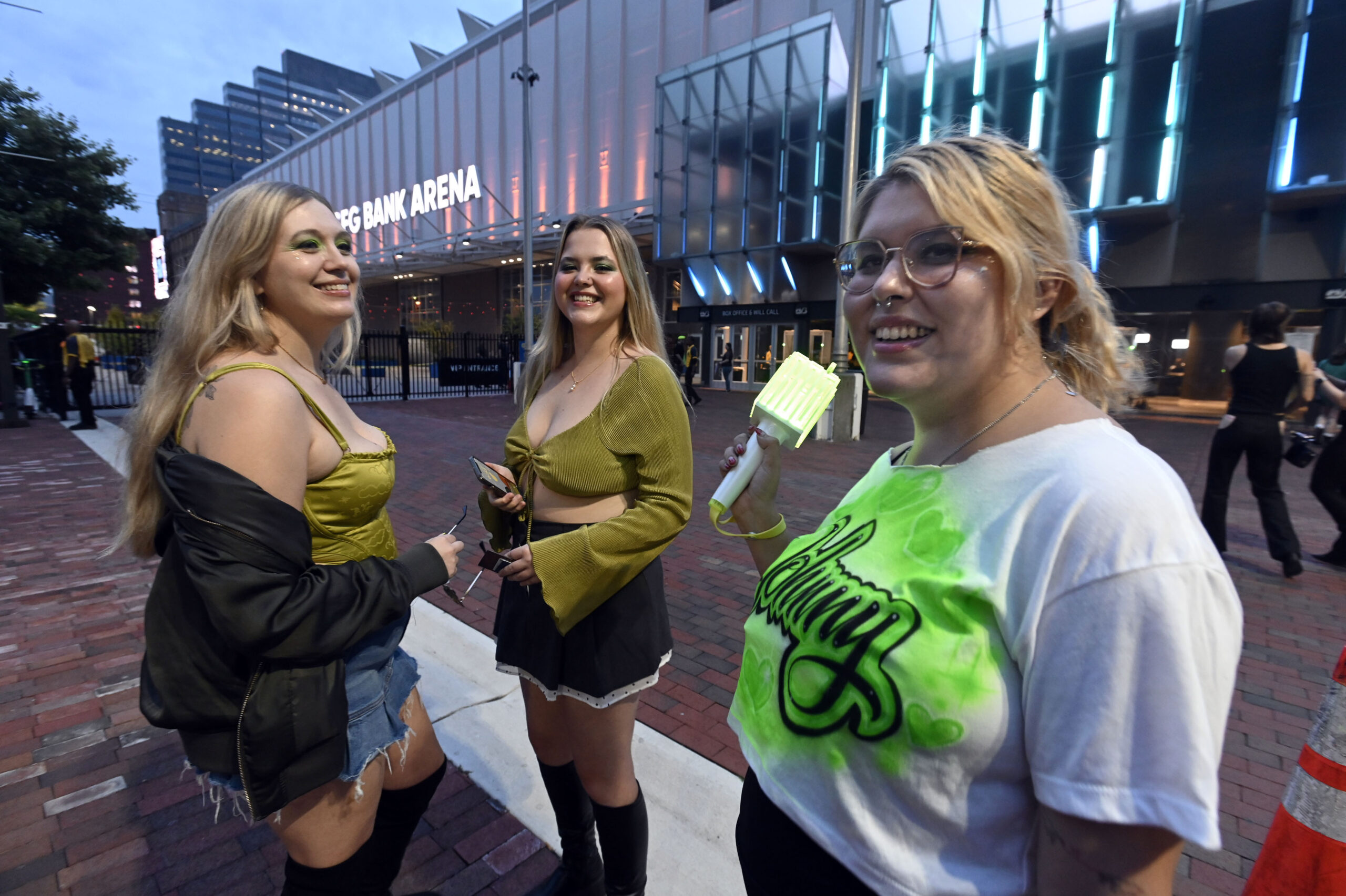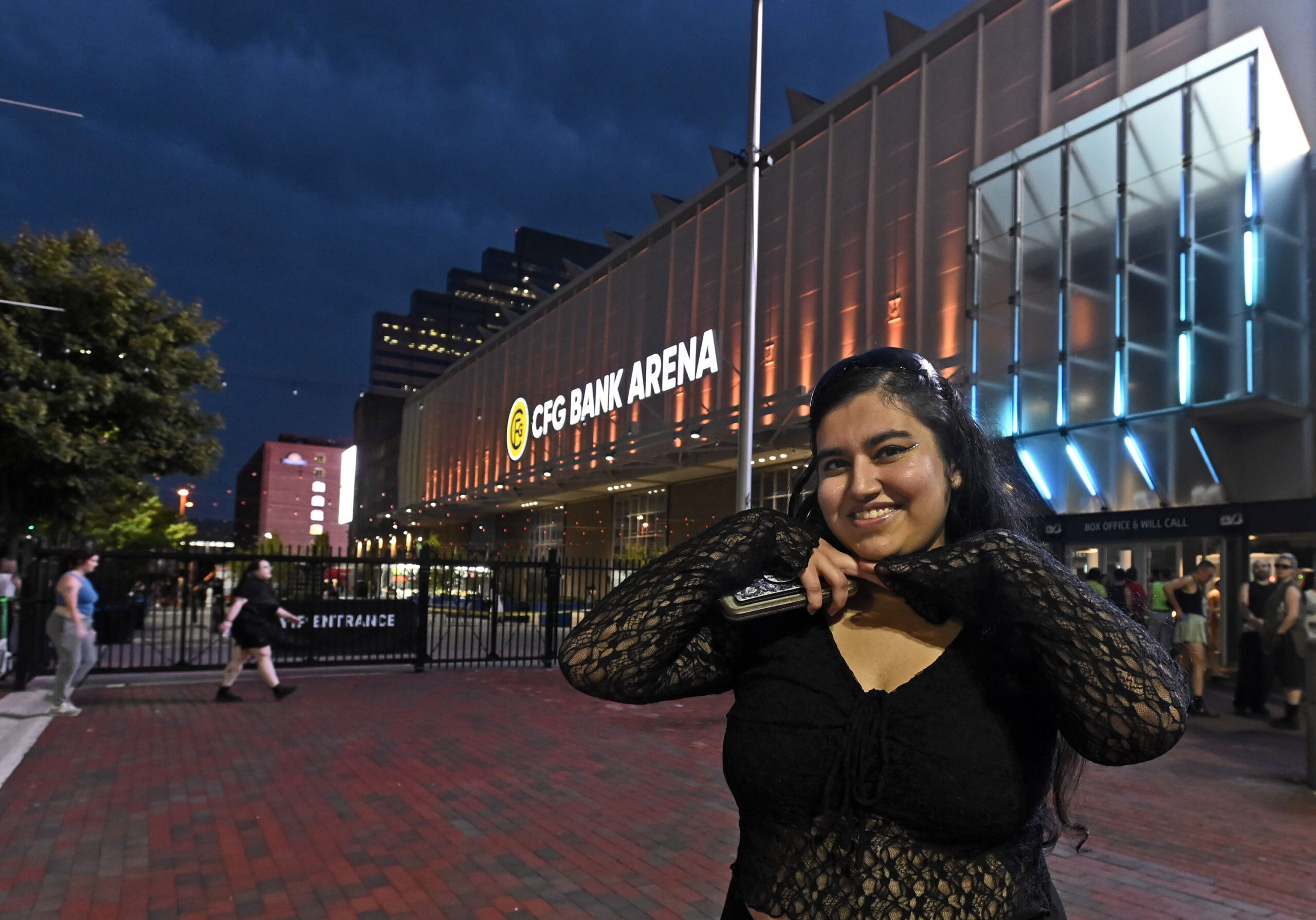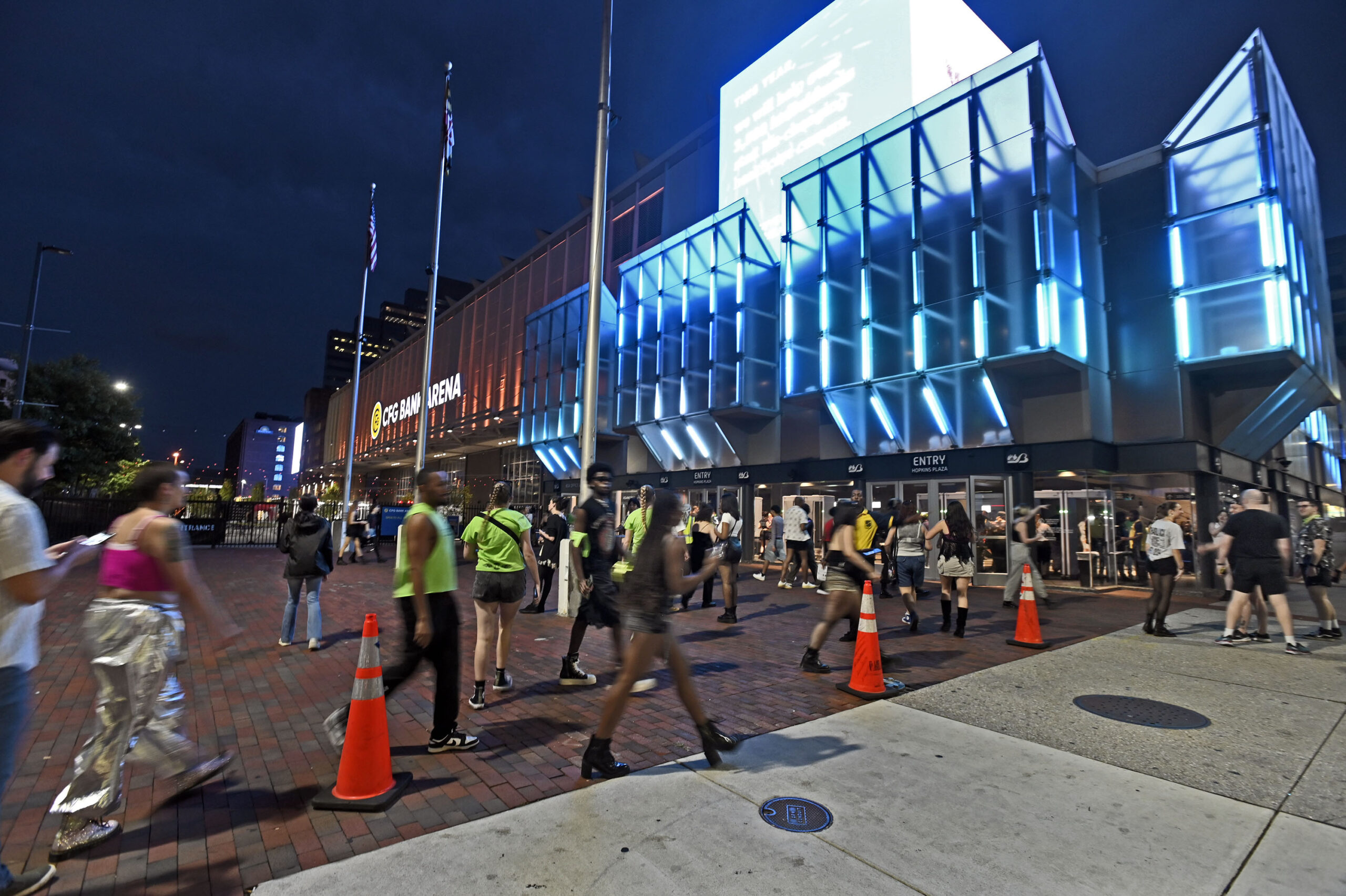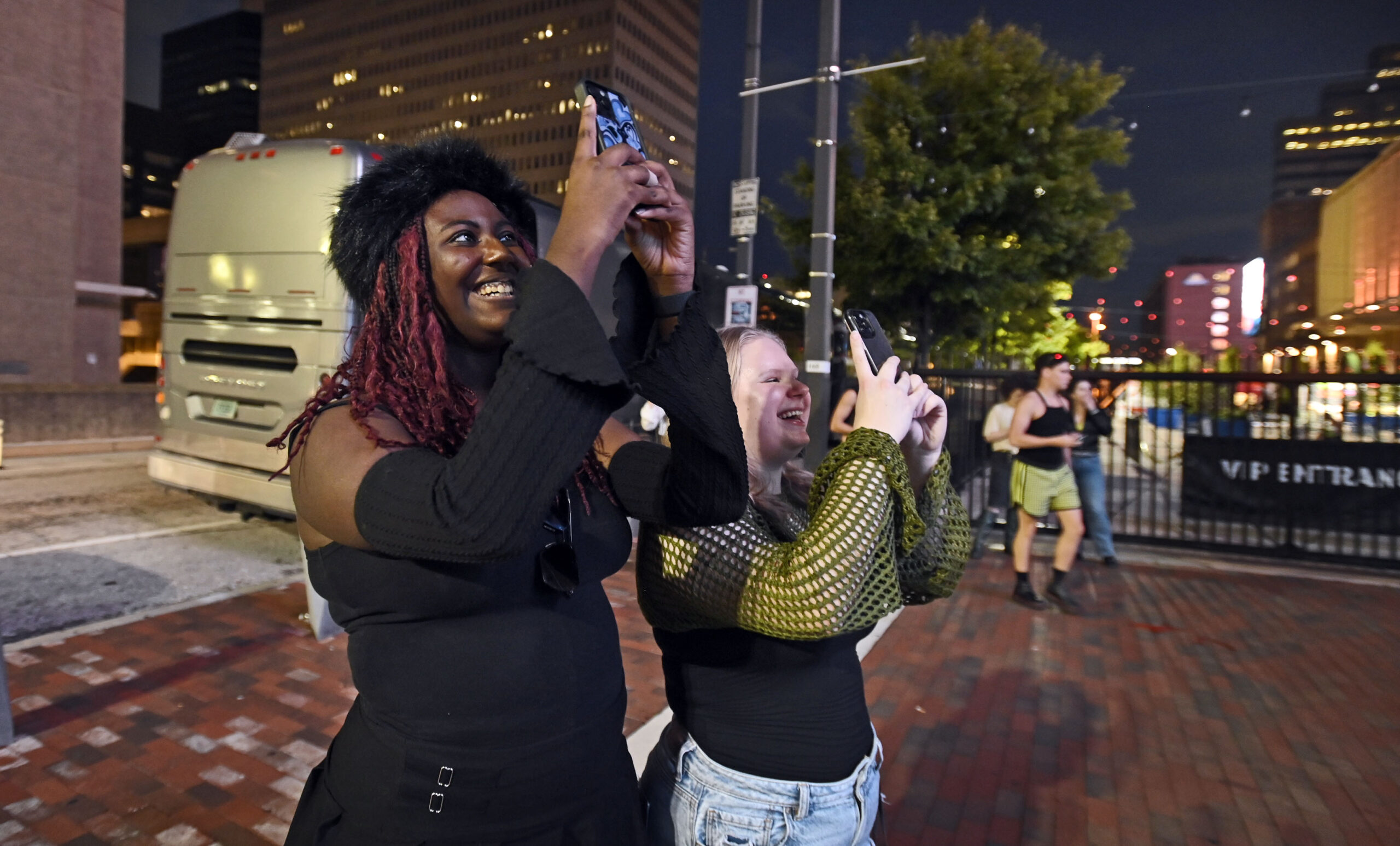Pop rock priestess Billie Eilish, who comes to the CFG Bank Arena Friday, is among the big musical acts who will perform in Baltimore this year while bypassing the nation’s capital.
It’s a list of Billboard superstars that includes but isn’t limited to Lizzo, Barry Manilow, Stevie Nicks, Pearl Jam and Stevie Wonder.
Some music lovers interpret that to mean pop stars and rock gods prefer the new, gussied-up Baltimore venue to Washington’s Capital One Arena.
Typical was a comment posted on PoPville, an online website that discusses issues of interest to Washington’s neighborhoods: “What’s going on with Capital One Arena?,” reads one post from May. “How come so many artists are choosing CFG Bank Arena in Baltimore over the 6,000 extra seats at CapOne that has incredibly easy access?”
The reality, however, is more complicated.
There’s no question that in the year since the 14,000-seat CFG Bank Arena reopened following a $250 million renovation, the facility has exceeded expectations, officials say.
“It’s a place now that sounds great with music,” said Mayor Brandon Scott, who has seen multiple artists on the CFG stage since the makeover, including Usher, Megan Thee Stallion and Mariah Carey. “The arena looks phenomenal and it’s really a place that presents itself for performers.”
Pre-renovation, the arena hosted just 75 events a year, including about 15 concerts, Frank Remesch, the arena’s general manager, said.
“In my old building, I would be so proud to sell out two or three shows annually,” said Remesch, who has been with the arena for 36 years.
“I would be beating my chest and smiling. After this weekend, we will have sold out 52 of the 134 shows we have put on since reopening. We just welcomed our one-millionth visitor. That’s an insane number. It’s almost unfathomable.”
While that level of success may be new to Baltimore’s concert scene, Capital One Arena officials are used to being the top dog in the region — and they say that hasn’t changed.
In a recent interview with The Sun, Jordan Silberman, president of venues for Monumental Sports Entertainment which owns Capital One, rattled off a list of big acts that had snubbed Bawlamer this year for The District — from Bad Bunny and Blink 182 to Olivia Rodrigo and Drake.
By almost every measure, he said, the Capital One Arena equals or outperforms CFG:
- The 20,000-seat DC arena hosts about 220 concerts annually, while in its first year CFG mounted 105.
- Roughly the same number of concerts play to full capacity at both venues. CFG sold out 38 shows its first year, according to Remesch, but Capital One is on pace to equal or surpass that number in 2024, Silberman said, noting it sold out 30 shows in the first nine months of the year.
- Pollstar, the influential music industry trade publication, says that Capital One ranked 23rd worldwide in ticket sales and 13th in gross revenue in the third quarter of 2024, Silberman said. The smaller CFG Arena ranked 41st in both categories.
“We had our busiest week for concerts at Capital One in 2023, and this year we will exceed it,” Silberman said. “Live music is having a great run right now. It is thriving globally.”
He chalks up the stream of artists that have detoured around Washington to scheduling vagaries: Capital One, unlike the CFG Bank Arena, is home to three sports teams: the Washington Wizards basketball team, the Washington Capitals ice hockey team, and the Georgetown Hoyas men’s basketball team. Combined, they gobble up 100 potential concert dates a year.
So if, for instance, Lizzo’s tour were to bring her to the East Coast during a week when the Wizards were in residence, she’d have to go elsewhere — and the nearest arena large enough to hold her audience is just up I-95 in Charm City.
While the CFG hosts occasional one-time sporting events, “We’ll never have a team,” Remesch said. “We’re not built for it, and I don’t want it.”
For his part, Remesch thinks the concert market is big enough for CFG and Capital One.
“I don’t want to get into a street fight,” he said. “I’m not going mano a mano [or ‘hand to hand’ in Spanish] with them. Both markets are super strong, and Capital One is a beautiful facility. A lot of artists play us both.”
He attributes CFG’s new appeal to performing artists to, among other things, an updated rigging system. Previously, moving in a big show with a few dozen trucks would require an entire day — an added cost for the artist and venue.
Last year, a 30-truck show for the singer-songwriter Sza was preparing to leave CFG just as a 27-truck group for the rock band Queen was coming in.
“I had SZA out by 3 a.m. and Queen in by 4:15 a.m.,” Remesch said. “Previously, that would have taken three to four days.”
But CFG may not be the DMV’s most recently modernized large concert venue for long; Silberman said Capital One will begin a $500 million-plus renovation project next year.
“We’re investing a lot in our facility,” he said, “and we’ll likely make some of the same improvements as Baltimore, from increasing our rigging capacity to expanding our loading dock size.”
Baltimore Development Corporation President Colin Tarbert said his organization has been tracking CFG’s economic impact.
They are seeing “a return to pre-pandemic levels around the arena,” he said, and “an increase in foot traffic because they’ve just had so many more events.”
Most visitors to the arena are from the region, Tarbert said, with some driving from Washington and Philadelphia — especially when an artist skips those cities but stops in Baltimore.
Shannon Lowe and Tiffany Bogg drove up from Richmond, Virginia, to see pop stars Charli XCX and Troye Sivan perform at CFG on Sept. 26.
The friends said they usually catch shows in their home city, but are willing to drive to D.C. and Baltimore to see bigger artists, like the rapper Drake and rock band The 1975, who skipped over Richmond.
The CFG arena’s renovations stood out when they saw The 1975 play in Baltimore last November. “We were like, ‘Whoa, This is great,’” Lowe said. “We were audibly impressed by everything.”
Concertgoers don’t typically stay overnight, so local hotels don’t see the same boost they would get from a convention, but Tarbert said parking garages and nearby restaurants benefit on nights when there’s a show.
Long term, officials hope to fill vacant buildings between the arena and the recently rebuilt Lexington Market to create a more connected westside of Downtown Baltimore.
The BDC hopes to see “more retail and nightlife to come to the blocks around the arena in order to have a bit more of an entertainment district,” Tarbert said, “not just a single venue to go to before or after the show.”
He added:
“I think it takes a while for entrepreneurs and business owners to see the activity, see it reoccurring, make sure the first year was as successful as the second year — and then they’ll say, ‘OK, this is here to stay.’”
Got a news tip? Contact reporter Mary Carole McCauley at mmccauley@baltsun.com, 410-332-6704 or @mcmccauley on X. Contact reporter Amanda Yeager at ayeager@baltsun.com, 443-790-1738 or @amandacyeager on X.
